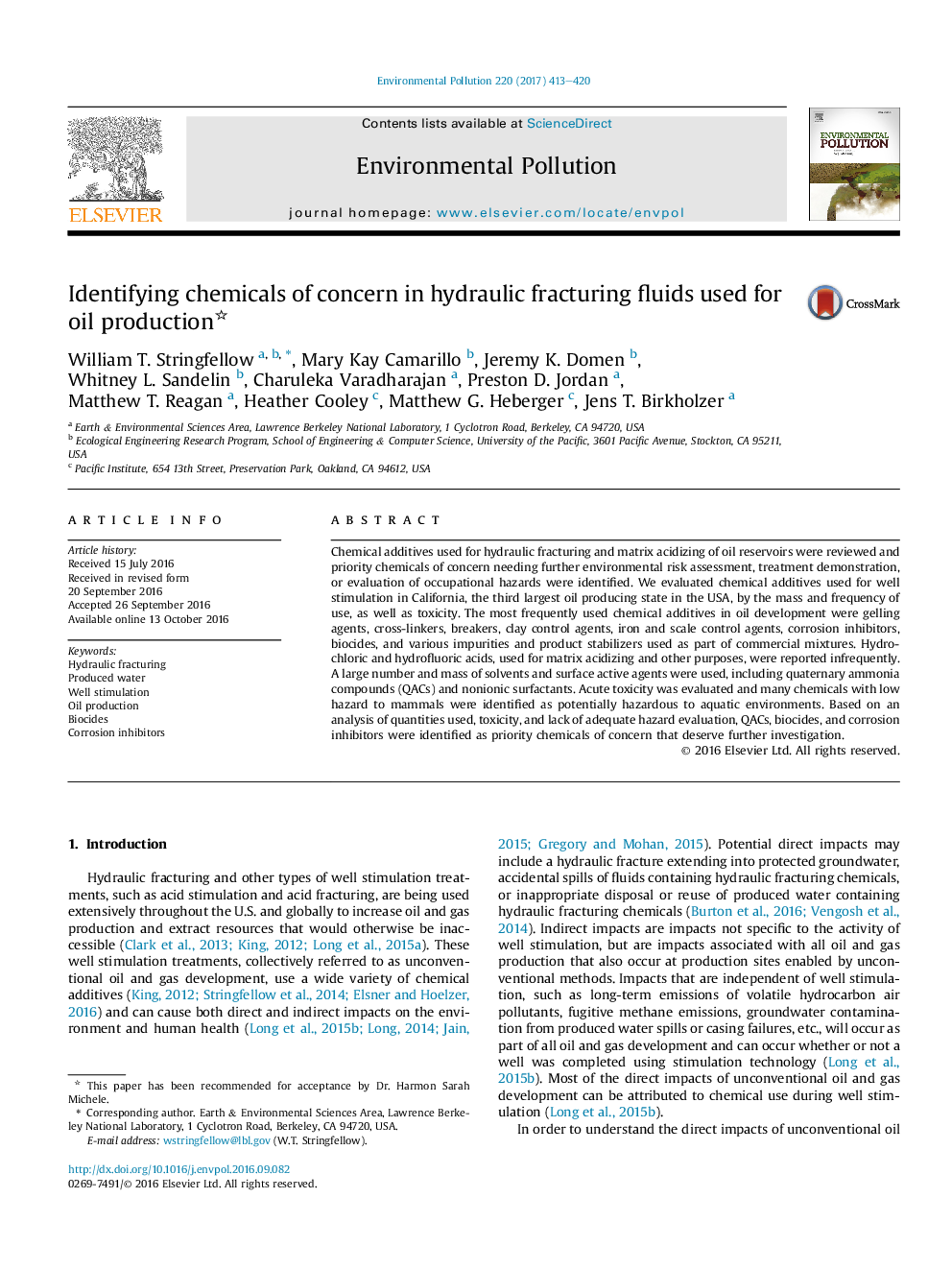| Article ID | Journal | Published Year | Pages | File Type |
|---|---|---|---|---|
| 5749234 | Environmental Pollution | 2017 | 8 Pages |
â¢Hydraulic fracturing in oil fields use different chemicals than in gas fields.â¢Chemicals of concern used for hydraulic fracturing in oil fields are identified.â¢A large number and mass of solvents and surface active agents were used.â¢Environmental data are missing for many chemicals and warrant additional study.â¢Aquatic toxicity and mammalian toxicity data are missing for risk analysis.
Chemical additives used for hydraulic fracturing and matrix acidizing of oil reservoirs were reviewed and priority chemicals of concern needing further environmental risk assessment, treatment demonstration, or evaluation of occupational hazards were identified. We evaluated chemical additives used for well stimulation in California, the third largest oil producing state in the USA, by the mass and frequency of use, as well as toxicity. The most frequently used chemical additives in oil development were gelling agents, cross-linkers, breakers, clay control agents, iron and scale control agents, corrosion inhibitors, biocides, and various impurities and product stabilizers used as part of commercial mixtures. Hydrochloric and hydrofluoric acids, used for matrix acidizing and other purposes, were reported infrequently. A large number and mass of solvents and surface active agents were used, including quaternary ammonia compounds (QACs) and nonionic surfactants. Acute toxicity was evaluated and many chemicals with low hazard to mammals were identified as potentially hazardous to aquatic environments. Based on an analysis of quantities used, toxicity, and lack of adequate hazard evaluation, QACs, biocides, and corrosion inhibitors were identified as priority chemicals of concern that deserve further investigation.
Graphical abstractDownload high-res image (161KB)Download full-size image
